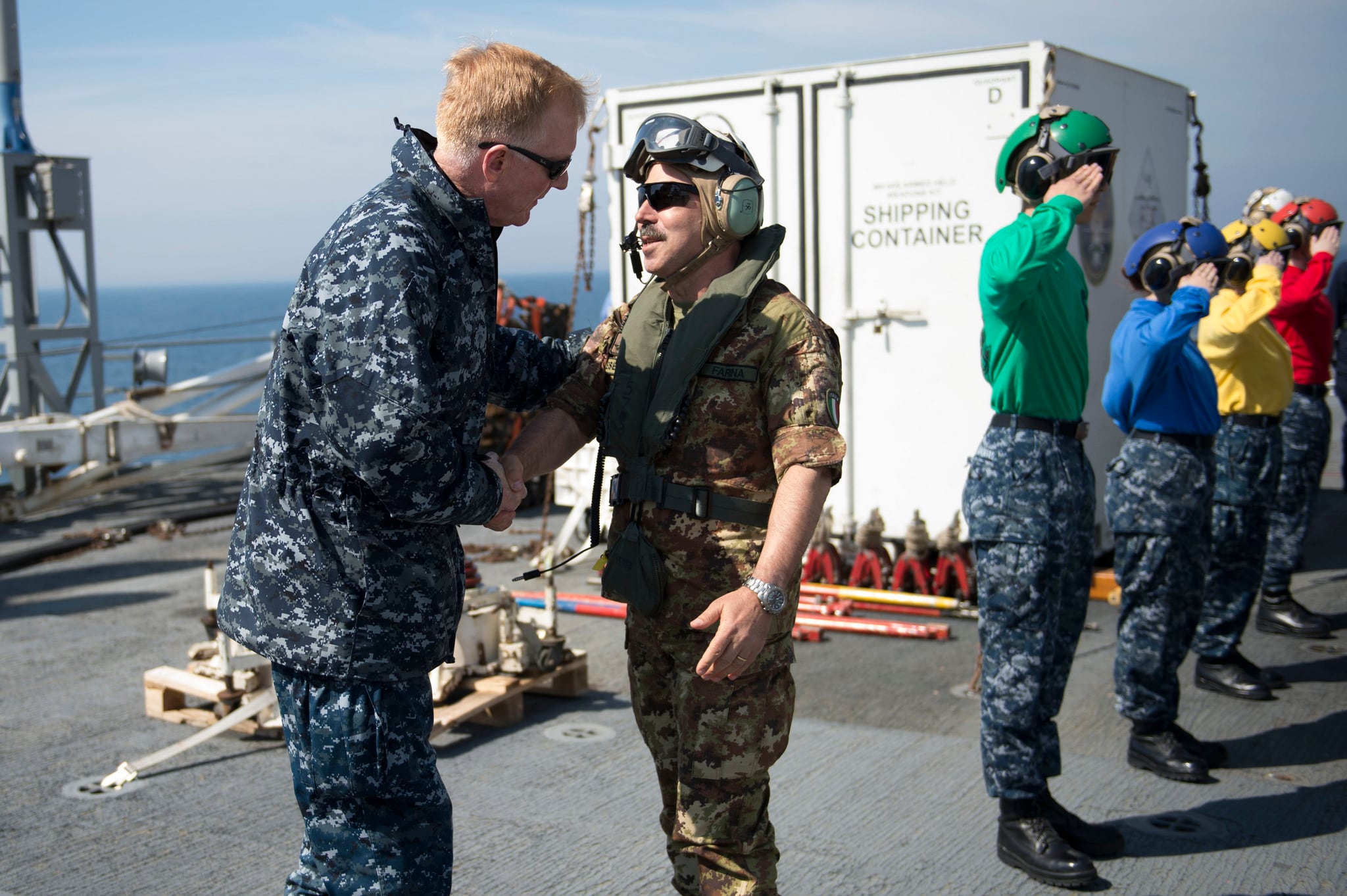The Russian militaryNavy has kept a low profile since the NATO kicked off a massive exercise in the Baltic Sea in early June, beginning of a major exercise that kicked off in early June, the head of 6th Fleet said Wednesday.
The Russian navy has had a limited presence around forces participated in the . With the annual BALTOPS exercise that features 17 nations in a show of resolve in a region increasingly threatened by Russian aggression. underway in Europe with 17 nations participating, Vice Adm. James Foggo told reporters Wednesday that the Russians have dispatched two spy ships to monitor the exercisegroup and have had planes fly over participating ships, including Foggo’s flagship, the command ship the Mount Whitney, "at altitude," he added.
"This year there has been less intensity of Russian activity as compared to BALTOPS 2015, nothing like the close flyby of the [destroyer] Donald Cook in April," Foggo said in a Wednesday interview with reporters.
The exercise features U.S. warships, including dock landing ship Carter Hall, and Marines with 3rd Battalion, 8th Marines who landed their amphibious assault vehicles on a beach at Uto, Sweden.
Last year, Foggo said told reporters that the Russians were more assertive. Shortly after the group got underway in 2014, Russian corvettes came alongside the group and ships were buzzed by SU-24 fighters. Russian forces have been increasingly provocative in encounters with U.S. and NATO forces following Russia's 2014 seizure of Crimea by force.
Foggo dispatched a senior aide, Rear Adm. Cathal O’Connor, to Moscow to meet with Russian navy leaders last week to discuss safety at sea and Foggo credits those discussions with easing some of the high-seas tension surrounding the exercise.
The April overflight of Donald Cook by multiple Russian SU-24s was swiftly condemned by the Pentagon and Navy leaders as "unsafe and unprofessional," and Foggo said the negative coverage may have impacted Russia’s calculus.
"We characterized that as unsafe and unprofessional, and I don't think they want to be seen that way," Foggo said.
The interactions between Russian and NATO forces during BALTOPS have been professional, Foggo said.
BALTOPS is a two-week annual exercise where NATO practices all the major warfare areas. This year the group is focusing on heavily on amphibious operations and anti-submarine warfare, Foggo said.
The Russian military is planning to do a fast-reaction exercise called a SNAPEX but there are no details on the maneuver just yet, he said.
Notably absent from the exercise thus far are Russian submarines. Foggo said the Russians have not been observed or detected during the exercise.

Sixth Fleet commander Adm. James Foggo greets Italian Gen. Salvatore Farina, commander of the NATO joint force, after landing aboard command ship Mount Whitney during BALTOPS 2016,
Photo Credit: Navy
Foggo, who is a career submariner, has sounded the alarm on Russian undersea activity, telling Navy Times in October that Russia's capabilities were growing.
"The Russians have always fully funded their submarine capabilities and as they've evolved, they've become better," he said. "They've become quieter and more capable adversaries. So we need to watch that more carefully and we need to watch our presence in the undersea domain."
David B. Larter was the naval warfare reporter for Defense News.





